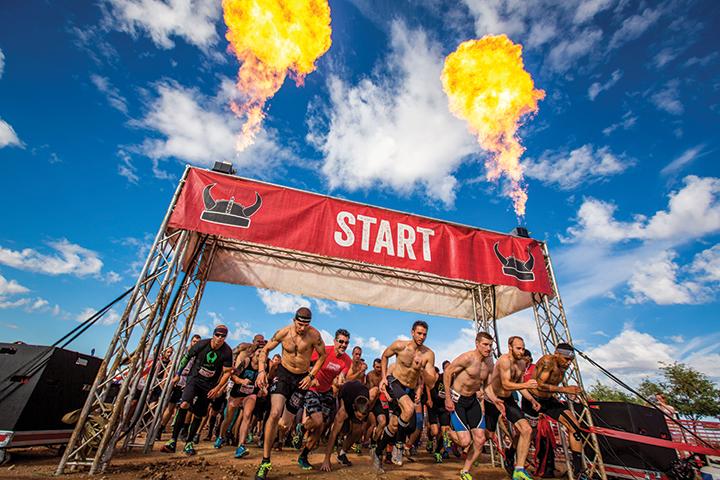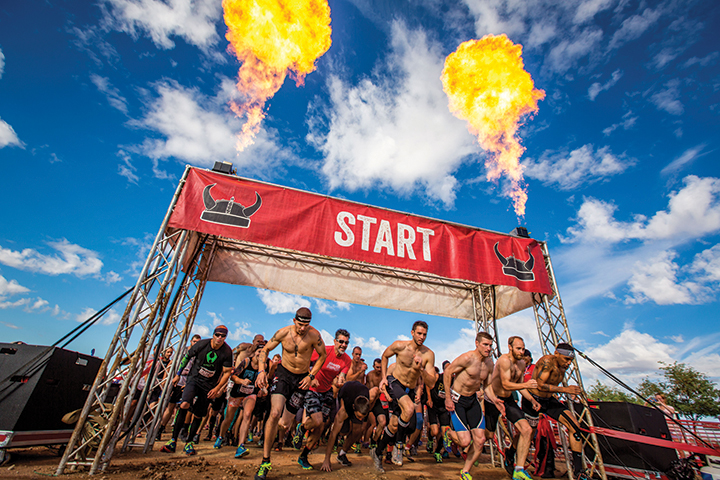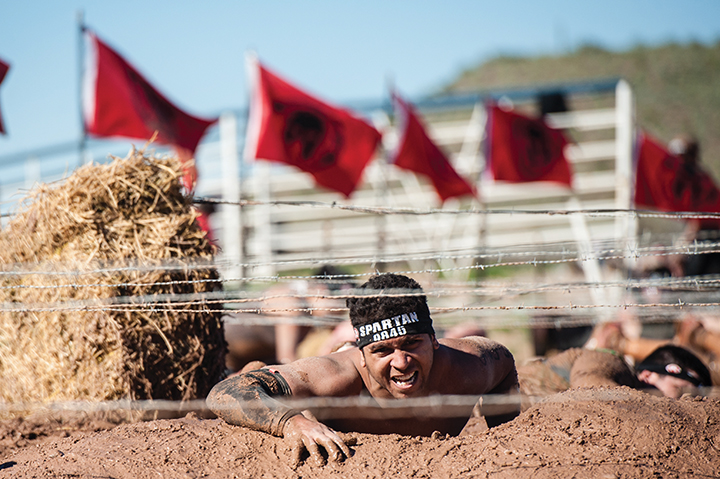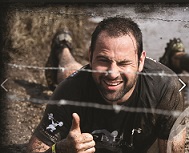
 Obstacle racing really needs no introduction these days. There were times when we’d have to describe the terrain, the courses and the obstacles, not to mention the athletes and the post-race environment – but thanks to obstacle racing’s growth and development as a sport, those days are gone. In fact, even the brands for the races – Tough Mudder, Spartan Race and Warrior Dash (known in industry parlance as the ‘big three’) have become recognizable to the non-racing public.
Obstacle racing really needs no introduction these days. There were times when we’d have to describe the terrain, the courses and the obstacles, not to mention the athletes and the post-race environment – but thanks to obstacle racing’s growth and development as a sport, those days are gone. In fact, even the brands for the races – Tough Mudder, Spartan Race and Warrior Dash (known in industry parlance as the ‘big three’) have become recognizable to the non-racing public.
It’s still a relatively new sport – at least by comparison to baseball, basketball and so on. While the U.K.’s Tough Guy was born in the 1980s as was the Camp Pendleton Mud Run in San Diego, it wasn’t until the late 2010s that things took off in the U.S., and the sport has stayed strong ever since.
Earlier in 2016, there were rumors that obstacle racing was declining or even dying. Those of us who actually know and understand the sport are pleased to say that rumors of its demise have been greatly exaggerated. The sport isn’t going anywhere. Even what might be called the second-tier and smaller local races are continuing to grow.
And as with all sports, there are trends. Some are fairly new, some continue to develop and others are a continuation of something we have been seeing for years. Here is a synopsis of trends being seen and felt at the business level:
Obstacle Race Travel: This is a great one to start with because it’s definitely the topic nearest and dearest to the heart of this publication’s readership. The obstacle race industry is an active part of the sports travel sector. It’s not an accident that Marriott has become a partner with the Spartan Race; in fact, the only surprise might be that it didn’t happen sooner.
Unlike a lot of the typical 5K road races, there isn’t an obstacle race being offered in just about every city every weekend, so it’s typical for obstacle race athletes to travel in order to compete. They might drive four or five hours – and they will fly as well. We’re also seeing them turn their trips into race-cations, particularly since some of the events are being held in scenic and fun places like Hawaii; the Spartan Trifecta (in which athletes can do three Spartan races in one weekend) is one example. There’s also the Bermuda Triple Challenge, which offers another great backdrop for racing.
Another trend we’re seeing is the rise of the sharing economy in obstacle racing. Platforms like Airbnb and Uber are a great way to stay and get around if you’re traveling to another city to take part in a race. We have a lot of younger people, including singles, competing, and this really appeals to them.
Families in Obstacle Races: This isn’t new but it’s certainly worth mentioning since it affects race growth. Sometimes, one spouse will become involved in racing, and it leads to the other deciding to try it. Many races also have special events for kids. It’s not uncommon in those cases to see one or both parents race in the morning, and then have the kids participate in their own race, with smaller and less intimidating obstacles, in the afternoon. (And in some of the 3-5 mile courses, parents and their children will participate together; I can tell you from experience that with small children it may take longer, and you may end up walking a good portion, but it’s a fun thing you and your kids can do together.)
Better Venues, Logically: When these races were in their infancy, a lot of them were set up in parks or on private land. While those areas had the wide-open spaces needed, they weren’t always easily accessible from the road (which meant traffic jams on the day of the event) as well as other (well-deserved) complaints about the shortage of parking and a lack of bathrooms and showers. Obviously, as races grew in enrollment, these problems did as well. These days, we’re seeing organizers seeking out venues that are already set up for sports events – ski resorts, horse parks and motocross parks are some examples, but stadiums are becoming popular as well. All those venues have the amenities needed for large crowds, and considering some races can have as many as 8,000 participants, it’s definitely necessary.
Stabilization of the Industry: When the obstacle racing industry first started exploding in popularity, everyone wanted to jump on the bandwagon, which led to (a) a lot of people setting up races but knowing nothing about event planning, logistics or anything else, and (b) trying to expand too quickly and then going out of business before they could put on even a fraction of the events they had planned. That turned a lot of people off. You’ll always have bad actors who have this idea they can put on an event and make a lot of money, but now that the dust has settled in the industry, and now that there is a dedicated community of obstacle race athletes who communicate on social media, they’re finding that people are far more well-informed and they can’t get away with that kind of behavior.
Of course, that’s not to say event owners don’t still make bad decisions. One year ago, we saw the Fiesta Bowl sponsored by Battlefrog. It was one of the worst business moves any obstacle race organizer has ever made, and considering Battlefrog (which was overextended even at the time of its commitment to the bowl game) has since disappeared from the obstacle racing landscape (and the Fiesta Bowl now has a new sponsor), we probably will not have obstacle races lining up to sponsor football games in the foreseeable future.
Increased Media Coverage: Obstacle racing has moved to television, with both Spartan Race and Tough Mudder now being broadcast. There’s even crossover viewership from the American Ninja Warrior programming. What’s great is the fact that (a) more people can become aware of the sport, and (b) there is more potential for advertising at the national level – which could lead to sponsorship of races at the local level.
Lifestyle Trends: It used to be that people who wanted to train for these races would just have to set up rigs in their backyards because there wasn’t any other alternative. But as people increasingly immerse themselves into the obstacle racing lifestyle, it’s only a natural extension that they want a more comprehensive fitness experience. This has led to the presence of permanent obstacle racing-specific gyms and programs. As an example, the first Spartan Gym opened in Miami in January, with equipment, trainers, workout plans and nutrition information just for this type of athlete. There are also training programs and trainers around the country for other races, including Tough Mudder. The American Ninja Warrior program mentioned earlier has also led to a number of gyms popping up. We’re also seeing a lot of people moving into functional fitness ‘box’ gyms in order to train.
Race Ambassadors/Pro Teams: In any sport, you will have athletes who rise to the top, and obstacle racing is no exception. The interesting thing is that races are learning to harness the star power of these athletes to increase participation. In the Midwest, as an example, there is a race called Conquer the Gauntlet, and it has formed its own pro team of racers that travels around and participates in the different events. It gets people talking and keeps them interested.
In conclusion, the obstacle racing industry continues to thrive. We can count on growth at the levels of the big races, as well as the smaller regional and local events. People are traveling to participate in events, and they are working on their own fitness in order to turn in a good performance. Mostly, they’re enjoying the challenge, which keeps them coming back, and keeps our sport strong and healthy.

